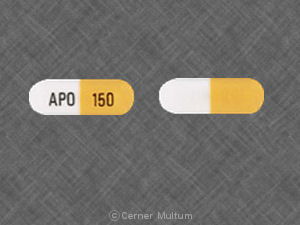Nizatidine Dosage
Medically reviewed by Drugs.com. Last updated on Jun 12, 2024.
Applies to the following strengths: 150 mg; 300 mg; 75 mg; 15 mg/mL
Usual Adult Dose for:
- Duodenal Ulcer
- Duodenal Ulcer Prophylaxis
- Gastric Ulcer
- Erosive Esophagitis
- Gastroesophageal Reflux Disease
Usual Pediatric Dose for:
Additional dosage information:
Usual Adult Dose for Duodenal Ulcer
300 mg orally once a day at bedtime OR 150 mg orally 2 times a day
Duration of therapy: Up to 8 weeks
Comment: Most patients heal within 4 weeks.
Use: Treatment of active duodenal ulcer
Usual Adult Dose for Duodenal Ulcer Prophylaxis
150 mg orally once a day at bedtime
Duration of therapy: Up to 1 year
Comment: Efficacy and safety data for the maintenance treatment of duodenal ulcer beyond 1 year are unknown.
Use: Maintenance therapy for duodenal ulcer patients after healing of an active duodenal ulcer
Usual Adult Dose for Gastric Ulcer
300 mg orally once a day at bedtime OR 150 mg orally 2 times a day
Duration of therapy: Up to 12 weeks
Comment: Malignant gastric ulceration should be excluded prior to starting treatment.
Use: Treatment of active benign gastric ulcer
Usual Adult Dose for Erosive Esophagitis
150 mg orally 2 times a day
Duration of therapy: Up to 12 weeks
Use: Treatment of endoscopically diagnosed esophagitis (including erosive and ulcerative esophagitis) and associated heartburn due to gastroesophageal reflux disease (GERD)
Usual Adult Dose for Gastroesophageal Reflux Disease
150 mg orally 2 times a day
Duration of therapy: Up to 12 weeks
Use: Treatment of endoscopically diagnosed esophagitis (including erosive and ulcerative esophagitis) and associated heartburn due to gastroesophageal reflux disease (GERD)
Usual Pediatric Dose for Erosive Esophagitis
12 years and older: 150 mg orally 2 times a day
- Maximum dose: 300 mg/day
- Duration of therapy: Up to 8 weeks
Use: Treatment of endoscopically diagnosed esophagitis (including erosive and ulcerative esophagitis) and associated heartburn due to GERD
Usual Pediatric Dose for Gastroesophageal Reflux Disease
12 years and older: 150 mg orally 2 times a day
- Maximum dose: 300 mg/day
- Duration of therapy: Up to 8 weeks
Use: Treatment of endoscopically diagnosed esophagitis (including erosive and ulcerative esophagitis) and associated heartburn due to GERD
Renal Dose Adjustments
Active Duodenal Ulcer, GERD, and Benign Gastric Ulcer Treatment:
- CrCl 20 to 50 mL/min: 150 mg orally once a day
- CrCl less than 20 mL/min: 150 mg orally every other day
Maintenance Therapy:
- CrCl 20 to 50 mL/min: 150 mg orally every other day
- CrCl less than 20 mL/min: 150 mg orally every 3 days
Renal failure: Data not available
Liver Dose Adjustments
Data not available
Precautions
CONTRAINDICATIONS:
- Hypersensitivity to the active component, other histamine-2 (H2)-receptor antagonists, or any of the ingredients
Safety and efficacy of capsules have not been established in pediatric patients.
Safety and efficacy of oral solutions have not been established in patients younger than 12 years.
Consult WARNINGS section for additional precautions.
Dialysis
Data not available
Other Comments
Administration advice:
- Once a day doses should be given at bedtime.
Storage requirements:
- Oral solution: Protect from light.
Patient advice:
- Patients should be advised that symptomatic response to treatment does not preclude the presence of a gastric malignancy.
- Advise patients to speak to their healthcare provider if they become pregnant, intend to become pregnant, or are breastfeeding.
More about nizatidine
- Check interactions
- Compare alternatives
- Pricing & coupons
- Reviews (14)
- Drug images
- Side effects
- During pregnancy
- Drug class: H2 antagonists
- Breastfeeding
- En español
Patient resources
- Nizatidine drug information
- Nizatidine (Advanced Reading)
- Nizatidine Capsules and Tablets
- Nizatidine Oral Solution
Other brands
Professional resources
Related treatment guides
See also:
Protonix
Protonix (pantoprazole) is used to treat erosive esophagitis and other conditions involving excess ...
Nexium
Nexium is used to treat GERD and other conditions involving excessive stomach acid. Learn about ...
Ozempic
Learn about Ozempic (semaglutide) for type 2 diabetes treatment, weight management, cardiovascular ...
Pepcid
Pepcid is used to treat ulcers in the stomach and for conditions where the stomach produces too ...
Prilosec
Prilosec (omeprazole) is used to treat symptoms of GERD and other conditions caused by excess ...
Ranitidine
Ranitidine is used to treat and prevent ulcers in the stomach and intestines. Includes ranitidine ...
Lansoprazole
Lansoprazole is used to treat stomach and intestinal ulcers, erosive esophagitis and ...
Esomeprazole
Esomeprazole is used for barrett's esophagus, duodenal ulcer prophylaxis, erosive esophagitis ...
Pantoprazole
Pantoprazole is a proton pump inhibitor used to treat GERD, erosive esophagitis, and ...
Famotidine
Famotidine is used to treat and prevent ulcers in the stomach and intestines. Learn about side ...
Further information
Always consult your healthcare provider to ensure the information displayed on this page applies to your personal circumstances.


